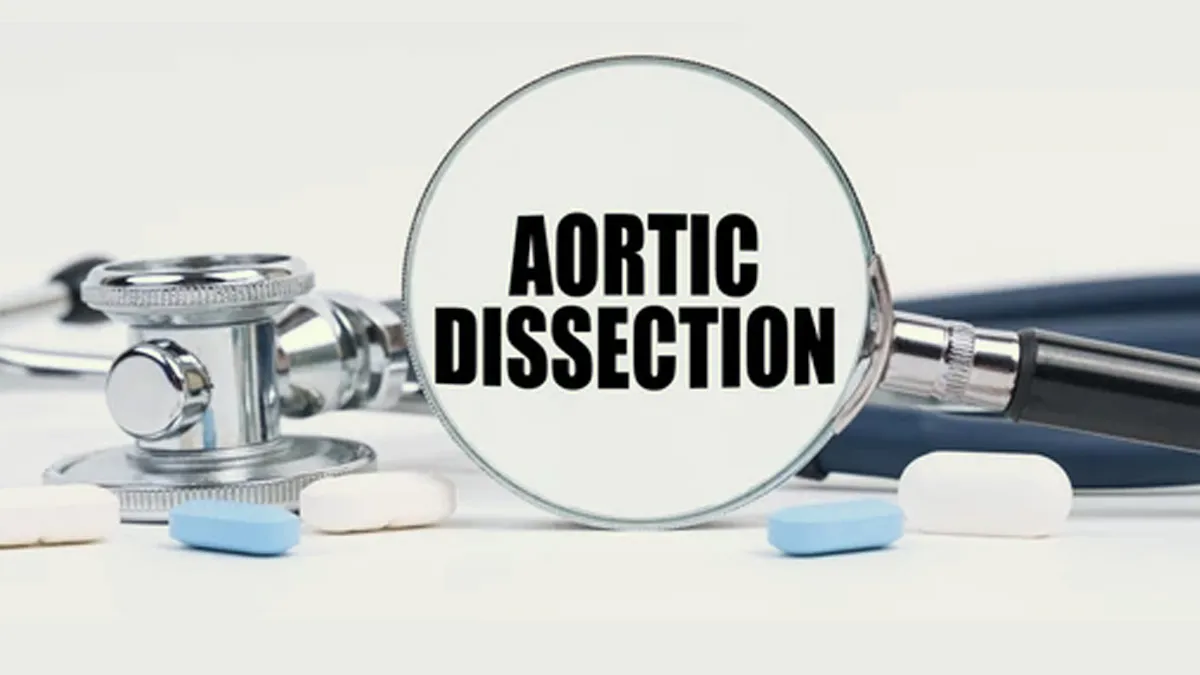
It often starts with sudden, sharp chest pain that feels unlike anything you have experienced before. It might spread to your back or seem to ease off, but it’s not something to brush aside. Aortic dissection is one of those rare, dangerous conditions that can strike without warning and escalate quickly. It is not something we often hear about, but knowing the signs could save a life.
Table of Content:-
We spoke to Dr Devananda NS, HOD and Consultant - Cardiothoracic Vascular Surgery Heart and Lung Transplant Surgery, Manipal Hospital, Old Airport Road, Bengaluru, who explained aortic dissection, its causes, symptoms, diagnosis, and treatment measures.
What Is Aortic Dissection?

“Aortic dissection is a life-threatening condition where a tear in the aorta allows blood to flow between its layers, causing it to split apart. This acute condition requires prompt attention, as delayed treatment can lead to fatal complications, including aortic rupture and loss of blood supply to vital organs like the brain, heart, and abdomen, ultimately resulting in death,” said Dr Devananda.
According to a 2022 study, about 1% of people with this condition die every single hour within the first 48 hours. This means 50% of patients could die without proper treatment within the first two days.
Who Is At Risk?

People with long-standing hypertension, especially those whose high blood pressure is not well controlled, are at significant risk. Patients with severe atherosclerosis (a disease of the aorta and blood vessels that weakens them and can cause heart attacks, strokes, etc) are also prone to developing aortic dissection.
“People with connective tissue disorders like Marfan syndrome, Ehlers-Danlos syndrome, or Loeys-Dietz syndrome are also at an increased risk. These are often underdiagnosed, wherein the very structure of the aorta is weak. It predisposes them to dissections or aneurysms, where the aorta expands abnormally, both of which can lead to rupture or dissection,” added Dr Devananda.
Apart from these, some of the etiological issues include:

- Smoking for a long time increases the incidence of both Type A and Type B dissections.
- Pregnancy, particularly in the later stages or postpartum period, can lead to acute aortic dissection.
- There are various congenital heart defects, such as bicuspid aortic valve disease (babies born blue), in which the aortic valve has only two leaflets instead of three. These patients have an 8–18% increased risk of dissection.
- Any enlarged aorta, regardless of cause, also carries a high risk of dissection.
Symptoms and Diagnosis
Aortic dissection is usually sudden and severe. Here are some symptoms shared by the expert:
- The most common symptom is chest pain, which can start in the middle of the chest and extend to the back. It can be fleeting, lasting a few seconds to minutes, then resolving, but it can be a warning sign.
- The pain can also be experienced in the back between the shoulder blades, which can be chronic and cause other issues.
- Patients may experience dizziness, fainting, stroke-like symptoms, sudden breathlessness, or even acute pain in the abdomen or lower limbs if blood flow is suddenly compromised.
Such patients often present to emergency departments and may be referred to cardiology, gastroenterology, neurology, or vascular departments based on their symptoms. Therefore, a high level of clinical suspicion is necessary to diagnose the condition early.
In the emergency setting, diagnosis often relies on good clinical examination, thorough history-taking, and CT Aortography - the best and fastest modality to diagnose aortic dissection. It uses contrast material to image the entire aorta and has high sensitivity and specificity.
Also Read: What Is Aortic Aneurysm? A Silent Cardiovascular Threat Often Mistaken For A Heart Attack
Classification and Treatment For Aortic Dissection
There is one simple classification called the Stanford classification, which divides dissections into two types: Type A and B.

- Type A concerns the ascending aorta, which begins near the heart.
- Type B begins after the branching of neck vessels, involving the back of the chest and abdomen.
Treatment and prognosis differ depending on the type of dissection.
If it is a type A dissection, patients should undergo surgery immediately, ideally within the first hours of reporting the symptoms. Even with surgery, the mortality rate is almost 10–15%, but a delay in treatment drastically increases the risk of death.
Type B dissections are managed medically at first unless complications arise (ongoing pain, neurological symptoms). Management includes controlling blood pressure and pain, hospital monitoring (for about a week), and follow-up imaging. Surgery or intervention is considered only if necessary.
[Disclaimer: This article contains information provided by an expert and is for informational purposes only. Hence, we advise you to consult your professional if you are dealing with any health issue to avoid complications.]
Also watch this video
How we keep this article up to date:
We work with experts and keep a close eye on the latest in health and wellness. Whenever there is a new research or helpful information, we update our articles with accurate and useful advice.
Current Version
